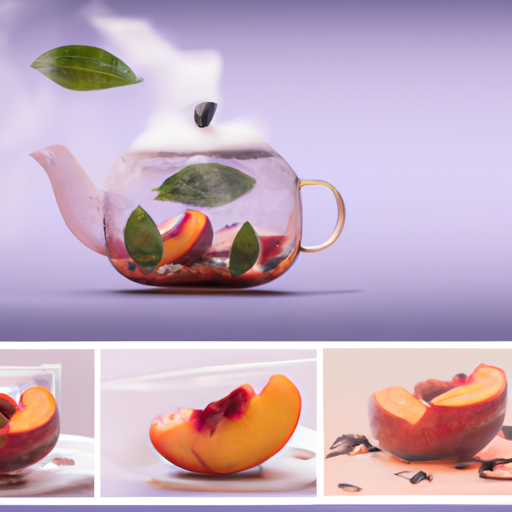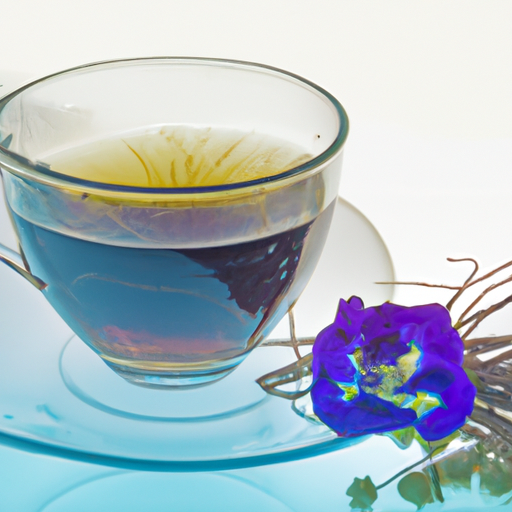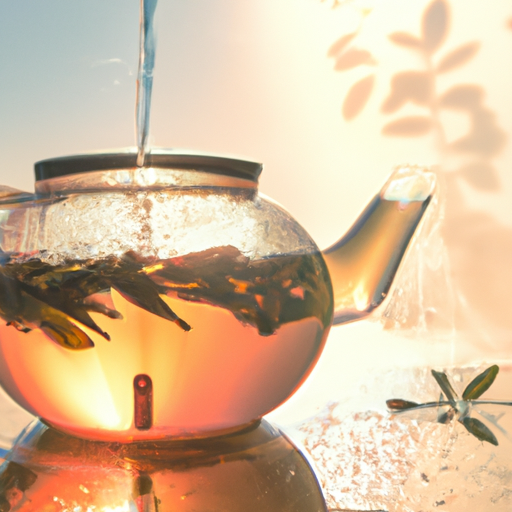Have you ever wondered how to harness the power of herb plants to create your own delicious and healing herbal tea? Look no further! In this article, I will guide you through the process of using herb plants to brew your own herbal tea, step by step.
From choosing the right herb plants for tea growing, to properly caring for them, and harvesting and drying your herbs, I will provide you with all the knowledge you need to become a master tea maker.
I will also share brewing techniques, flavor combinations, and recipes to help you create the perfect cup of herbal tea. But it doesn’t stop there! I will delve into the numerous health benefits of herbal tea and provide tips on storing and enjoying your homemade creations.
Get ready to embark on a botanical journey and discover the wonders of herbal tea!
Key Takeaways
- Choosing the right herb plants is crucial for brewing herbal tea
- Proper care and growing conditions are important for the health of herb plants
- Harvesting and drying herbs correctly maximize flavor and potency
- Brewing techniques and flavor combinations can be customized for personalized herbal tea experiences
Choose the Right Herb Plants for Tea Growing
To make the perfect cup of herbal tea, you’ll want to choose the right herb plants that won’t only add incredible flavor but also provide numerous health benefits. When it comes to herb plant selection, it’s crucial to consider the growing conditions.
Each herb has its own preferences for sunlight, soil type, and water requirements. For example, chamomile thrives in full sun and well-drained soil, while mint prefers partial shade and moist soil. By understanding the specific needs of each herb, you can create an optimal growing environment and ensure the health and vitality of your plants.
Properly caring for your herb plants is essential for their growth and productivity. Now let’s delve into the next section on how to properly care for your herb plants, ensuring they thrive and provide you with the best ingredients for your herbal tea.
Properly Care for Your Herb Plants
When caring for your herb plants, remember the saying ‘A watched pot never boils.’ Proper herb plant maintenance is essential to ensure their optimal growth and health.
To keep your herb plants thriving, there are a few key considerations to keep in mind. First, provide them with the right amount of sunlight, as most herbs prefer full sun.
Second, make sure the soil is well-draining and rich in organic matter.
Third, water your herbs regularly, but avoid overwatering as it can lead to root rot.
Some common herb plant problems to watch out for include pests like aphids or fungal diseases such as powdery mildew. By being attentive to these factors and promptly addressing any issues that arise, you can ensure the longevity and productivity of your herb plants.
Moving on to the next step of harvesting and drying your herbs, it’s important to…
Harvesting and Drying Your Herbs
Get ready to savor the delightful aroma and taste of your homegrown herbs with the satisfying process of harvesting and drying them. Properly preserving herbs for future use is crucial to ensure their maximum flavor and potency.
When it comes to using fresh herbs for tea, harvesting them at the right time is essential. The best time to harvest herbs is in the morning after the dew has dried but before the sun gets too hot. Gently snip off the top 1/3 of the plant, leaving enough foliage for it to continue growing. After harvesting, rinse the herbs gently with cool water to remove any dirt or debris.
To dry the herbs, tie them in small bundles and hang them upside down in a warm, well-ventilated area. Once dried, store the herbs in airtight containers, away from sunlight and moisture.
Now that your herbs are ready, let’s move on to the next step in the process: brewing techniques for herbal tea.
Brewing Techniques for Herbal Tea
Now that you’ve harvested and dried your herbs, let’s dive into the various techniques to brew a perfect cup of flavorful and aromatic herbal tea. Imagine savoring a warm cup of chamomile tea before bed, where the soothing flavors and calming effects help you unwind and drift into a peaceful sleep.
To achieve the best results, it’s important to consider the brewing temperature and steeping time for your herbal tea. Different herbs have varying temperature requirements for optimal extraction of their flavors and medicinal properties. Generally, a temperature range of 200°F to 212°F (93°C to 100°C) works well for most herbal teas. Steeping time can vary from 5 to 10 minutes, depending on the herb and desired strength.
Here are two key sub-lists to help you brew your herbal tea effectively:
-
Brewing Temperature:
- Use boiling water for robust herbs like peppermint and rosemary.
- For delicate herbs like chamomile and lavender, slightly cooler water around 190°F (88°C) is recommended.
-
Steeping Time:
- Stronger flavors can be achieved by steeping herbs for the maximum recommended time.
- For a lighter flavor, reduce the steeping time and experiment to find your preferred taste.
Now that you understand the basics of brewing herbal tea, let’s explore exciting flavor combinations and recipes to elevate your tea-drinking experience.
Flavor Combinations and Recipes
Explore a world of delightful flavors and tantalizing combinations that’ll transport you to a blissful oasis with every sip of your customized cup of aromatic goodness. When it comes to herbal tea, the options are endless.
Combining different herbs can create unique and unforgettable flavors. For a refreshing blend, try combining mint with lemon verbena or chamomile with lavender. If you prefer a more robust taste, consider mixing rosemary with sage or hibiscus with ginger. Each combination offers a distinct taste profile that can suit any mood or occasion.
Whether you’re looking for a soothing cup before bed or a rejuvenating boost in the morning, experimenting with different types of herbal tea will surely satisfy your taste buds.
So, let’s delve into the world of herbal tea benefits and discover how these flavorful concoctions can promote wellness and vitality.
Health Benefits of Herbal Tea
Indulging in a cup of herbal tea can have a positive impact on your overall well-being, providing a range of health benefits that are sure to enhance your daily routine. The history of herbal tea dates back to ancient civilizations, where it was used for medicinal purposes. Today, there are various types of herbal tea available, each with its own unique properties and flavors. Chamomile tea, for example, is known for its calming effects and can help with sleep and relaxation. Peppermint tea is popular for its ability to aid digestion and relieve headaches. Green tea, although not technically an herb, is often included in the herbal tea category and is celebrated for its high antioxidant content.
Below is a table showcasing some different types of herbal tea and their associated health benefits:
| Herbal Tea | Health Benefits |
|---|---|
| Chamomile | Calming, sleep aid |
| Peppermint | Digestion, headache relief |
| Green tea | Antioxidant, heart health |
| Ginger | Digestion, nausea relief |
| Lavender | Anxiety, stress relief |
Understanding the health benefits of herbal tea allows you to harness the power of nature to support your well-being. Now that you know the benefits, let’s explore how to store and enjoy your homemade herbal tea.
Storing and Enjoying Your Homemade Herbal Tea
When it comes to storing dried herbs for homemade herbal tea, it’s essential to follow proper guidelines. I’ve learned that dried herbs should be stored in airtight containers, away from light and heat, to maintain their potency and flavor.
Additionally, serving and enjoying homemade herbal tea involves steeping the herbs in hot water for the recommended time, straining the liquid, and savoring the unique flavors and health benefits that herbal tea provides.
Properly Store Dried Herbs
To ensure your dried herbs retain their flavor and potency, store them in a cool, dry place away from direct sunlight. This will help preserve their freshness and extend their shelf life.
Here are some effective storing techniques:
-
Use airtight containers: Transfer the dried herbs into glass jars or resealable bags to keep moisture out and prevent oxidation.
-
Label and date: Clearly label each container with the herb’s name and the date it was dried. This will help you keep track of their freshness and prevent confusion.
-
Keep away from heat and humidity: Avoid storing dried herbs near the stove or in the refrigerator, as these environments can introduce moisture and compromise their quality.
By following these storing techniques, you can maintain the flavor and potency of your dried herbs for a longer period of time.
Now, let’s move on to how to serve and enjoy your homemade herbal tea.
Serve and Enjoy Your Homemade Herbal Tea
Get ready to savor the delightful flavors and therapeutic benefits of your homemade herbal infusion by following these simple steps.
To serve and enjoy your homemade herbal tea, start by selecting the appropriate infusing techniques. Some popular methods include steeping loose herbs in hot water, using tea bags or infusers, or making a concentrated herbal decoction. Experiment with different techniques to find your preferred brewing method.
Additionally, investing in herbal tea accessories can enhance your tea-drinking experience. Consider purchasing a tea strainer, tea infuser, or teapot with a built-in infuser. These tools allow for easy extraction of the herbal flavors and make straining your tea a breeze.
Remember to let your herbal tea steep for the recommended time to achieve the desired flavor and strength. With these infusing techniques and herbal tea accessories, you can fully enjoy the aromatic and therapeutic qualities of your homemade herbal tea.
Frequently Asked Questions
Can I use any type of herb plant for making herbal tea?
Yes, you can use various types of herb plants to make herbal tea. They offer different flavors such as mint, chamomile, and lavender. To preserve their potency, dry the herbs thoroughly and store them in a cool, dark place.
How often should I water my herb plants?
Water your herb plants regularly, allowing the soil to dry out slightly between waterings. Choose a container with good drainage to prevent overwatering. Propagate herb plants from cuttings by placing them in water until roots form.
What is the best time of day to harvest herbs for tea?
The best time to harvest herbs for tea is in the morning. The cool temperatures and high moisture levels help preserve the essential oils responsible for flavor. Ideal weather conditions include mild temperatures and low humidity.
How long should I steep my herbal tea for maximum flavor?
To achieve maximum flavor when steeping herbal tea, steep it for around 5-7 minutes at a temperature of 195-205°F. This allows the herbs to release their aromatic compounds and flavors, resulting in a rich and satisfying cup of tea.
Are there any herbs that should not be combined in herbal tea recipes?
When it comes to brewing herbal tea, it’s important to know which herbs shouldn’t be combined. Some herbs, like licorice root and chamomile, can have adverse effects when mixed together. Avoid these common mistakes to ensure a flavorful and safe herbal tea experience.
Conclusion
In conclusion, growing and using herb plants for herbal tea is a rewarding and beneficial practice. By carefully selecting and caring for the right herbs, harvesting and drying them properly, and mastering various brewing techniques, one can create a delightful cup of homemade herbal tea.
Not only does herbal tea offer a range of flavors and recipes to explore, but it also provides numerous health benefits. In fact, a study conducted by the National Institutes of Health found that herbal teas can help reduce inflammation and improve digestion.
So, why not start growing your own herb plants and enjoy the wonders of herbal tea today?










